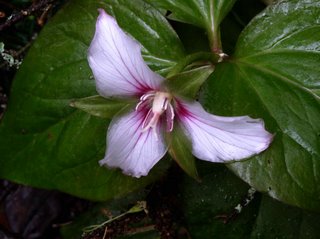 Tuesday, May 30th already and just 5 PM here on the mountain. Guess I came in just in time as the skies just opened and the gentle rain has changed to a heavy pour even though the temperature continues at 79.8. I had planned to get something out this weekend but the first sunny days and a long list of gardening chores kept me away from my computer. That's not to say that I didn't think about the importance of Memorial Day and what it means to me.
Tuesday, May 30th already and just 5 PM here on the mountain. Guess I came in just in time as the skies just opened and the gentle rain has changed to a heavy pour even though the temperature continues at 79.8. I had planned to get something out this weekend but the first sunny days and a long list of gardening chores kept me away from my computer. That's not to say that I didn't think about the importance of Memorial Day and what it means to me.Our family believes in service to country and the philosophy of the power of our freedoms were ever present. Both grandfathers and a grandmother served in WWI, my Dad was in the Navy in WWII. He served on the USS Kerney which was torpedoed even before the war started and while on neutrality patrol in the North Atlantic. I lost an uncle in Normandy and another uncle to Viet Nam. I was in a Guard engineering unit and my son was in the Navy. Our freedoms are important to us and we think of them and are thankful for them every single day. We hope you are thankful too!
Memorial Day in Vermont is another signal, kind of a gardener's reminder to changes in weather, less chance of frost and the beginning bloom of some of nature's showiest wildflowers. By now the purple trilliums, Trillium erectum, are about finished even under the big white pines. The painted trilliums look especially good in places although they refuse to group themselves in prominent colonies like the purples and whites. The white grandiflorums are turning pink and light lavender as they fade away--annual reminders to me that it's probably close to Memorial Day.
I have always enjoyed the orchids and I equate Memorial Day weekend with the chance to seek out lady slippers. The pink lady slippers, cypripedium acaule, are out now and knowing that they are available for viewing makes my want to take some pictures....more pictures. For some reason I just really like this flower. To me, finding a new lady slipper is like picking up an arrowhead. I just get a rush as if succeeding at some individual conquest.
The adjacent state parks with their swamps and bogs and waters provide ample viewing space for all wildflowers and the past 4 days have been exceptional. Great waves of clitonia, the so called blue-bead lily, are everywhere. Bunchberries with their perfect white blooms are coloring up on the forest floor and rock tops along the way.....and the list of beautiful flowers and foliage continues.
Spring rains and warm days bring on mushrooms too and I can't forget the job of picking morels. They are the best. Morels to me are kind of like a find of orchids. I might take pictures, I will pick mushrooms, I will tell others about my happiness but I won't tell where I've been. I can't and I won't. Maybe some day in the future but certainly not now. That's just the way it is with me. They are parts of nature and I hold the map. By spending just a little time outside, you can make your own map and enjoy these things too.
So as June approaches get out into nature, reflect on our freedoms and go find some nice wildflowers!
From the mountain above Peacham Pond,
George Africa
http://vermontflowerfarm.com
















